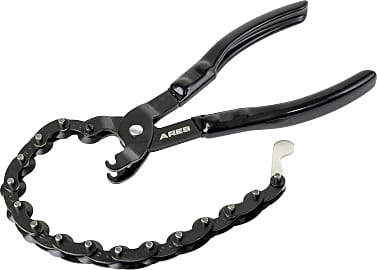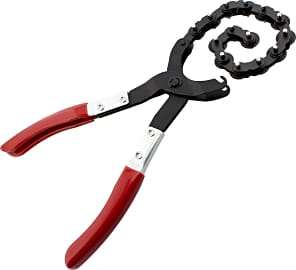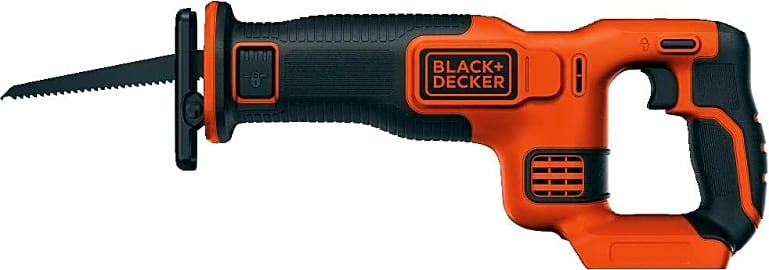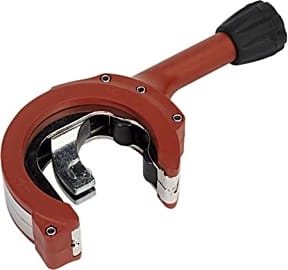The 7 Best Exhaust Pipe Cutters

This wiki has been updated 37 times since it was first published in May of 2016. Whether you work in an automotive shop or are a bit of a gearhead who likes to get fast and furious with your own ride, one of these exhaust pipe cutters will be an essential addition to your tool kit. These options are specifically designed to make slicing through tailpipes easy and convenient, just make sure to use the recommended safety precautions when operating them. When users buy our independently chosen editorial selections, we may earn commissions to help fund the Wiki.
Editor's Notes
November 14, 2020:
Due to repeated complaints about its durability and effectiveness, we removed the Lisle Cutoff Tool from our list. We also found that the Grip-On 10-Inch lacked the quality and precision necessary for a good exhaust pipe cutter, and removed it as well.
We added the Sealey Ratcheting, an expensive, but high-quality model. It probably wouldn’t make sense for the casual user to spend so much on a specialized tool like this, but if you’re a professional and do a lot of exhaust pipe cutting, the Sealey Ratcheting could be a great investment.
We also added the ABN Tool, which is a similar style to a few of our other picks, but at a considerably lower price. It doesn’t appear to be noticeably inferior, so if your budget is tight, it could be a great choice.
If your cutting work isn't going to be limited to exhaust pipes, and want a tool that’s a bit more functional, these regular pipe cutters might be a better bet.
Regardless of which option you choose, make sure to follow the proper safety protocols when handling and operating a pipe cutter. Their sharp blades may be small, but they can cause serious injury if grabbed or handled incorrectly.
September 05, 2019:
Although you probably won’t find one in an automotive tool set, an exhaust pipe cutter is a convenient implement for those who often work on cars or trucks. We’ve looked for models with adequate strength and simple usability, ultimately keeping the OEM Tools Tailpipe Cutter and GearWrench 2031DD as top picks. We’ve also added the Stanley Proto thanks to its hand-ratcheting mechanism, but it’s quite a bit more expensive than the former two, so it might be best for professional use. After some consideration, we have also opted to add a reciprocating saw, the Black & Decker 20V Max. We suggest that this be left to those with experience in both exhaust modification and power tools, however, because the potential for damage and/or uneven results is greater than with a chain-style cutter. And as with any other selection, be sure to wear the proper safety gear.
Special Honors
Snap-on Blue-Point The Snap-on Blue-Point was designed for wall thicknesses of up to 2.6 millimeters, whether copper, stainless steel, or PVC. It offers a total of 13 cutting wheels in its robust chain and has a butterfly screw that enables you to apply adequate force. shop.snapon.com
From Steam Clouds to Supercars
The first engines of any type were steam-driven, and like so many technological innovations, have roots in the ingenuity of ancient Greek physicists.
Built in sizes bigger than a car and smaller than a bread box, the internal combustion engine plays an important role in many parts of modern life. The first engines of any type were steam-driven, and like so many technological innovations, have roots in the ingenuity of ancient Greek physicists. Way back when the Roman Empire still bordered the Red Sea, a mathematician named Hero devised a turbine called the aeolipile powered by the release of steam from two nozzles oriented at ninety degrees to a spinning, hollow sphere. Albeit an engineering marvel, there was no practical application for such a turbine, and no way to make the technology available to the masses. It would take humanity nearly two millennia to develop worthwhile, combustion-driven power.
Emerging around the early 18th century, the steam engine that preceded the gasoline types was powered by external combustion, which simply meant that the heat source wasn't an actual part of the system. For a long time, the only internal combustion units existed as research models, essentially just academic prototypes hopefully leading to a publicly feasible design. In 1876, alongside Gottlieb Daimler and Vilhelm Maybach, Nikolaus Otto patented the first compressed-charge, four-stroke engine. The transition of gases through the intake, compression, combustion, expansion, and exhaust stages was somewhat uncreatively named the Otto Cycle, and to this day, this same conceptual design propels most gasoline and diesel vehicles down the road.
Harnessing The Fire Inside
To easily understand how an engine works, imagine it as an air pump rather than a car's drivetrain. Gases, 20 percent of which are oxygen, enter the intake and funnel into the cylinder, where they're brought to several times atmospheric pressure along with an injection of hydrocarbon fuel. At peak compression, a spark enters the equation, and the mixture ignites and rapidly expands, forcing the piston outward and turning the crankshaft. The piston reaches bottom dead center, the cylinder's exhaust valve opens, and the partially oxidized gases leave the chamber, head through a manifold, and out a series of pipes that may or may not help filter harmful pollutants. To recap: air comes in, it gets squeezed, it explodes, then it's pushed out. It's almost as though the rotating crankshaft is a side effect.
Here's where people probably get the entirely wrong idea that backpressure has merit in an exhaust system.
Focused on evacuating every last bit of used air, the exhaust manifold wastes very little space before starting to condense, joining the flows together. Miniature shockwaves reverberate as the pipes contract and come together, and those waves move back up the manifold towards the engine block. This is where well-engineered manifolds or custom-built headers can make a difference. A properly tuned system will see those reversed shockwaves reach the opening to the combustion chamber immediately before the exhaust valve closes. Lower pressure in the manifold than in the cylinder means that the last miniscule amount of exhaust is extracted from the combustion, providing a fresh start for the next cycle. In turn, the cylinder then has a relative vacuum of its own compared to the intake manifold, ensuring that the intake valves don't become a bottleneck.
Here's where people probably get the entirely wrong idea that backpressure has merit in an exhaust system. If the downpipes are too wide, the exhaust moves through them at a lower velocity. As the point of the engine is to move air quickly, that exhaust should ideally exit the rear of the system very rapidly — otherwise heat dissipation, efficiency, and reliability all suffer. Furthermore, with too low of a velocity, the cylinder-refreshing negative pressure waves are too weak to suck the extra waste out before the next cycle; a dirty chamber and poor combustion leads not only to poor performance, but also misfiring, detonation, and the buildup of material over time.
So, You Want To Install A Cat-Back
No matter what, you can't vent exhaust directly to the atmosphere, and only the most precisely tuned sports, grand touring, and race cars have true open headers and straight pipes. In fact, many beginner gearheads fail to appreciate just how incredibly loud a car is without the right exhaust. A muffler doesn't make what you'd call a noticeable difference; it makes the difference between paying attention to the road and the inability to hear yourself think. It's actually illegal to drive un-muffled autos in many municipalities, simply due to the noise. Beyond that, the O2 sensors and catalytic converter located downstream from the manifolds are there for a reason (e.g., the ozone layer), and they don't stay fully functioning and free-flowing forever.
Most of all, a good exhaust cutter imparts immense mechanical advantage to a small blade, letting mere humans slice through solid metal with minimal effort.
A busted tailpipe or decaying muffler is a somewhat common problem, especially in salt- and moisture-heavy climates. This is especially true in areas that experience drastic seasonal changes; the icy-cold winters and hot, humid summers of the Midwest are notorious for corroding auto frames and pipes. And while an aftermarket downpipe won't turn a Plymouth into a Porsche, some models of production vehicles can see performance benefits from aftermarket exhaust systems — some, but not all. Many consumer vehicles undergo extensive tuning and testing to ensure a properly fitting exhaust setup, but there are certainly cases where manufacturers bottle up a couple extra horsepower with restrictive manifolds or filters.
Whether you're working on a stage 1 street rod or an NHRA Super Stock car, someday you'll have to lop off an old exhaust pipe. One of these tools will let you do that with ease. They'll work with any large pipe, not just those on cars, and some are well-suited to slicing through formerly round materials that are now distorted or corroded. Many consist of bicycle-style chains with hardened, tempered-steel blades, and there are also fixed-handle models that operate more like a traditional pipe cutter. Some users find the fixed models to provide better leverage, while others prefer the chains. Most of all, a good exhaust cutter imparts immense mechanical advantage to a small blade, letting mere humans slice through solid metal with minimal effort.












